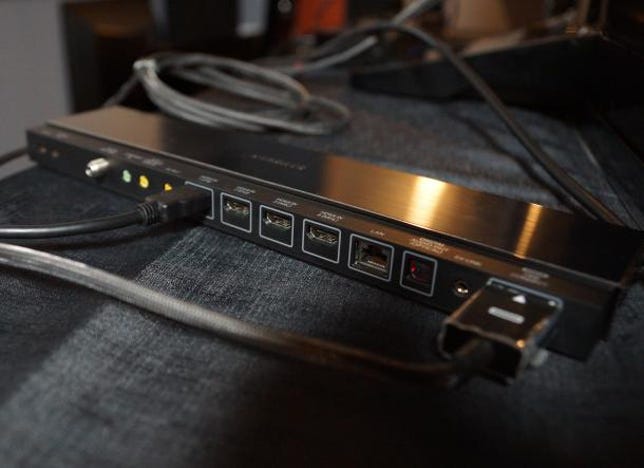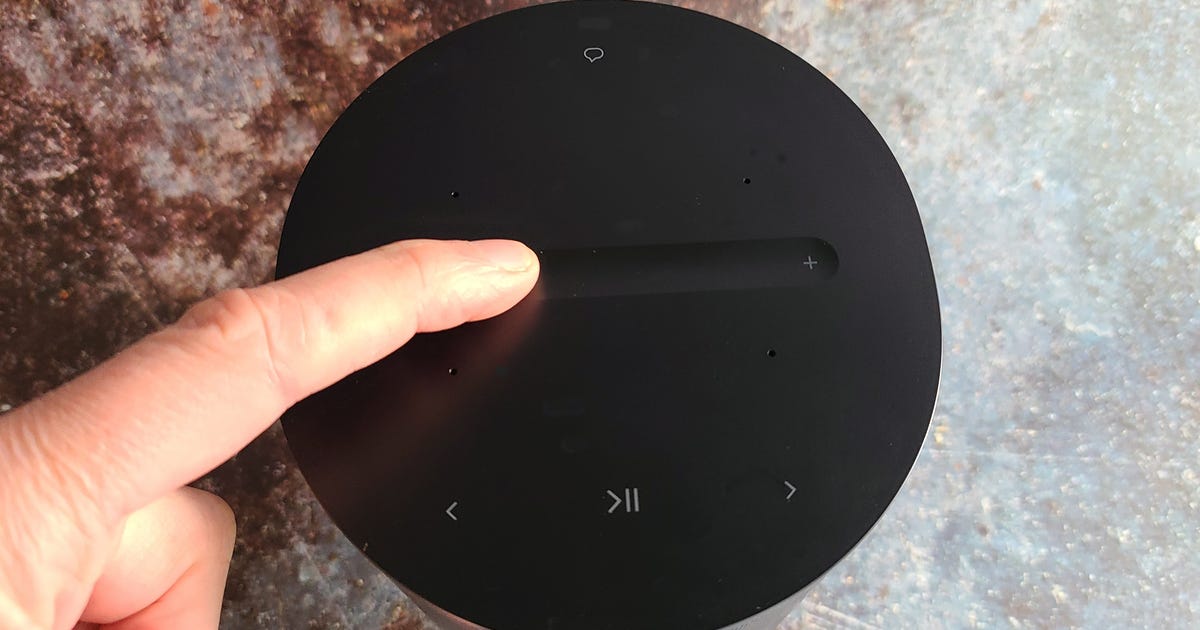Currently, there are over two dozen Ultra HD “4K” big-screen displays available or imminently available. The problem is, only one TV and two projectors are fully compatible with the upcoming HDMI 2.0 standard.
So we asked all the companies making 4K TVs, what’s their planned path for upgradability to the new standard?
In case you missed it, here’s a bit of a primer. Recently, HDMI Licensing announced HDMI 2.0, the next version in that evolving connection. This replaces HDMI 1.4, which is what you have on most (if not all) of your gear. The highlights are increased bandwidth, which allows for higher resolutions and frame rates, and no new cables. You can read all about it in “HDMI 2.0: What you need to know.”
The issue is, even though the cables are the same, what happens inside the TV isn’t. If a TV has HDMI 1.4 inputs, it simply won’t work with the higher resolutions/frame rates of 2.0.
In other words, nearly all of the current 4K UHD TVs are incompatible with the highest-frame rate 4K UHD content. That might not be an issue today, but it can be a problem in the future as more of that content becomes available.
To remedy this issue, some companies are claiming they’ll be able to update their 1.4 inputs to work with 2.0 via a simple firmware update. Other companies are requiring hardware changes. Others aren’t committing firmly to any upgrade path.
Which brings us to this article. I reached out to all the manufacturers that currently produce Ultra HD 4K TVs, posing the question “What’s up, doc?” in regards to an HDMI 2.0 upgrade path. Here are the responses.
LG“Enabling technologies for Ultra HD are evolving and LG is leading the way with H.265 built-in to our new models. Of course, only one Ultra HD TV now on the market has HDMI 2.0, because it was just finalized. We can’t say when exactly, but future Ultra HD TVs (from LG and presumably from others) will include this capability down the road. In the meantime, we are reassuring the early-adopter consumers who have purchased LG’s first-generation Ultra HD TVs that we’ll have a solution to handle 60Hz 4K content in the future.” – John Taylor, Vice President Public Affairs and Communications.
Samsung Samsung’s high-end displays are currently shipping with an external input box (shown at right). This connects to the TV via a proprietary cable. The advantage of this method is Samsung can upgrade the box without having to do anything to the TV. No word on cost yet.


CNET
“Samsung’s UHD TVs are the only TVs available with outboard connectivity and features ensuring compatibility with future UHD standards. With both hardware and software upgrades from Samsung’s Evolution Kit, the Samsung UHD TV will support new compression formats, digital signal formats, and copy protection requirements instituted by studios and broadcasters.” – Dan Schinasi, Senior Marketing Manager for TV Product Planning at Samsung Electronics America
Sharp“Now that the HDMI 2.0 spec has been finished, our engineers are working to incorporate the new chipset, which should be available in spring 2014, as soon as possible into future products. With regards to our current 70-inch 70UD1 4K UHD TV, we’re evaluating how best to provide a playback path for 4K 60fps content, which may become available in the future. In the meantime, our 70UD1 accepts any and all 4K content up to 30fps natively via all four onboard HDMI inputs and upscales 1080p content to 4K pixel resolution via our proprietary Revelation Upscaler to make everything you watch today better.
Similarly, we are also working to incorporate new encoding technology such as H.265 into future products and will strive to provide a playback path for legacy products as well.”
Related stories
- LED LCD vs. plasma vs. LCD
- Active 3D vs. passive 3D: What’s better?
- How big a TV should I buy?
- TV tech explainer: Every HDTV technology decoded
- What is refresh rate?
- Why Ultra HD 4K TVs are still stupid
- Audiophile Odyssey: Behind the Scenes at B&W, Meridian, and Abbey Road Studios
SonyFrom Mike Lucas, Senior VP of Sony Electronics’ Home Entertainment & Sound group: “Sony is prepared to support the HDMI 2.0 specification on its line-up of 4K Ultra HD televisions with an easy firmware update to be available over the Internet by the end of this year.”
This short response belies the complexity of what’s happening. Sony is one of the only manufacturers that is claiming to be able to upgrade their existing 4K TVs to HDMI 2.0 with a simple Internet download. Will this be “full” HDMI 2.0 compliance? HDGuru has an interesting article explaining that.
Meanwhile, the company’s two newest 4K projectors already support HDMI 2.0. Sony also says that its older 4K products, namely its 84-inch TV and its first 4K projector, will require hardware upgrades to reach HDMI 2.0 compliance. The price of those upgrades hasn’t been made official, but for UK models HDTVtest was informed “it’s in the region of thousands rather than hundreds of pounds.”
TCL“TCL will be showing HDMI 2.0 at CES this year. Their 2014 4K TVs will offer HDMI 2.0 as well.”
ToshibaToshiba sent out a press release last week about new 4K models, that also addressed the HDMI 2.0 issue. The quote is from Scott Ramirez, who quite possibly has the longest title in the AV industry: “Vice President of Product Marketing and Development, Visual Products, Toshiba America Information Systems Inc., Digital Products Division.”
Here’s the quote about the new TVs from the press release, with a quote-within-the-quote:
“Although these units are shipping with HDMI 1.4 level capability, Toshiba will also provide a free firmware upgrade to HDMI 2.0 level capability this December 2013 to support 4K 60fps content. ‘Toshiba is leading the industry in 4K Ultra HD technology,’ said Ramirez. ‘While many brands are just getting started in Ultra HD, our CEVO 4K engine is second-generation technology. Now we are adding HDMI 2.0 level capability so users can enjoy our amazing picture quality with higher speed 60fps 4K content.'”
Seiki and PanasonicSeiki and Panasonic haven’t replied yet to our queries. The latter is either surprising or not surprising, depending on what you take from this news. That said, their first 4K TV did claim to have HDMI 2.0 compliance, so their silence is less of a deal than it seems. We’ll update this article if we get more info from these companies.
Bottom lineSony and Toshiba have committed to an upgrade path via free firmware available soon, Samsung says its path involves a new external input box (which likely isn’t free), and the promises made by Sharp and LG are much more vague. TCL doesn’t have an upgrade path, and while Seiki didn’t reply, I’d be surprised if it offered an upgrade. Panasonic’s lone 4K TV is also the only one said to support HDMI 2.0 right now.
So if you’ve got your heart set on a 4K TV this year, be wary. While it will be able to handle the 4K content that’s available now, it might not be able to handle what’s coming. Will we see 2160p/60 content next year in any volume? Probably not. 2015? Maybe. If you’re the type of person that wants the latest and greatest, and doesn’t mind upgrading every few years, go for it. If you’re just looking for the “best” TV right now that will last you a while, 4K TVs are currently in a weird place where the standards are moving slower than the manufacturing, and you risk getting stuck with something that might not work to the fullest “true” 4K potential.
If you fall somewhere between these two groups, it might save you some stress to focus on the companies with a clear upgrade path from HDMI 1.4 to 2.0.
Got a question for Geoff? First, check out all the other articles he’s written on topics like HDMI cables, LED LCD vs. plasma, active versus passive 3D, and more. Still have a question? Send him an e-mail! He won’t tell you what TV to buy, but he might use your letter in a future article. You can also send him a message on Twitter @TechWriterGeoff or Google+.




